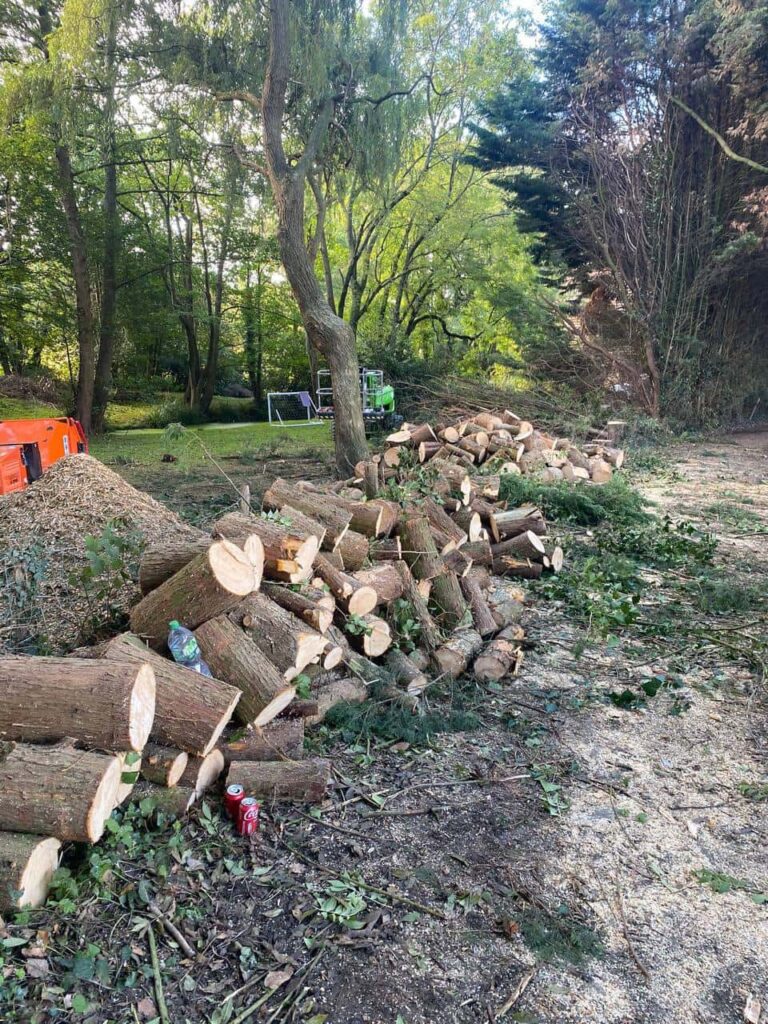The Environmental Impact of Dead Wood Removal
Introduction: Dead wood removal is common in tree care and maintenance, but have you ever considered its environmental impact? While dead wood may seem like a natural part of a tree’s life cycle, its removal can have significant ecological implications. In this blog post, we will explore the environmental effects of dead wood removal and how it can benefit and challenge local ecosystems.
The Role of Dead Wood in Ecosystems:
Dead wood, whether in the form of fallen branches or decaying trees, plays a vital role in maintaining healthy ecosystems:
1. Biodiversity: Dead wood provides habitat and food sources for numerous species, including insects, fungi, birds, and small mammals. These organisms contribute to the rich biodiversity of forests and woodlands.
2. Nutrient Recycling: As dead wood decomposes, it releases nutrients into the soil, enriching it and supporting the growth of new plants and trees.
3. Carbon Storage: Dead wood stores carbon for extended periods, helping mitigate the effects of climate change by sequestering carbon dioxide.
4. Erosion Control: Fallen logs and branches slow water flow, reducing soil erosion and protecting water quality.
The Environmental Impact of Dead Wood Removal:
While dead wood removal may be necessary for safety and tree health reasons, it can have several environmental consequences:
1. Habitat Loss: Removing dead wood can disrupt the habitat for various wildlife species, potentially leading to population declines.
2. Reduced Biodiversity: Removing dead wood may limit the availability of food and shelter for certain species, affecting their diversity and abundance.
3. Soil Depletion: Dead wood removal can disrupt nutrient cycling and reduce soil fertility, potentially impacting the health of surrounding vegetation.
4. Carbon Release: Cutting and removing dead wood can release stored carbon into the atmosphere, contributing to greenhouse gas emissions.
5. Altered Hydrology: Dead wood removal can change water flow patterns, affecting local hydrology and water quality.
Balancing Act: Responsible Dead Wood Management:
While it’s crucial to consider the environmental impact of dead wood removal, it’s equally important to practice responsible management:
1. Selective Removal: Focus on removing dead wood that poses safety risks or targets specific tree health issues, leaving as much as possible to benefit wildlife and ecosystems.
2. Leave Woody Debris in Place: Whenever possible, leave fallen branches and logs in natural areas to provide habitat and nutrients for local flora and fauna.
3. Consider Habitat Piles: Create habitat piles or log piles in designated areas to concentrate dead wood resources for wildlife while keeping them away from structures or paths.
4. Reforestation Efforts: When removing trees, consider replanting native species to help restore biodiversity and offset the carbon loss.
Conclusion: Dead wood removal is necessary for tree care and safety, but it’s essential to be mindful of its environmental impact. Hitchin Tree Surgeons prioritises responsible dead wood management, ensuring the removal process is carried out with a deep understanding of its ecological consequences. By striking a balance between tree health and environmental stewardship, we can continue to enjoy safe, healthy trees while preserving the integrity of our local ecosystems.
Call us on: 01462 412 994
Click here to find out more about Hitchin Tree Surgeons
Click here to complete our contact form and see how we can help with your tree’s needs.

